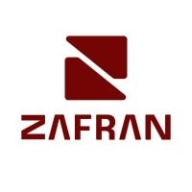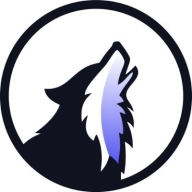


Red Canary and Vicarius vRx are cybersecurity solutions competing in threat detection and vulnerability management. Red Canary seems to have the upper hand in threat detection, whereas Vicarius vRx excels in vulnerability remediation.
Features: Red Canary offers advanced integration with various EDR software such as CrowdStrike and Carbon Black and provides near real-time alert reviews that translate into immediate action through its automation capabilities, allowing efficient incident response. Vicarius vRx stands out with patchless protection, automating patching and providing a single platform for vulnerability discovery, prioritization, and remediation. It offers comprehensive dashboards and real-time information on cybersecurity trends, enhancing proactive protection.
Room for Improvement: Red Canary could improve by expanding its automation functionalities and integrating user-friendly interfaces to better match the drawback recovery process. It could also benefit from more diverse threat intelligence sources. Vicarius vRx may enhance its user experience by refining its interface to include more customizable scheduling options and expanding its library of scripts. Additionally, it could streamline its onboarding process for new users for faster acclimatization.
Ease of Deployment and Customer Service: Red Canary offers a cloud-based deployment model that allows quick setup and seamless integration with existing systems. Its customer support is efficient and knowledgeable. Vicarius vRx provides straightforward deployment with robust customer service, emphasizing ease of use during onboarding and rapid customer support responses, ensuring smooth initial setup.
Pricing and ROI: Red Canary offers competitive pricing focusing on high ROI by reducing incident response times and minimizing risks. Vicarius vRx's pricing might be higher but is justified by its extensive vulnerability management capabilities, offering significant ROI by lowering attack risks and enhancing security posture. Vicarius vRx emphasizes comprehensive protection through an all-in-one platform, whereas Red Canary focuses on cost-effectiveness and speed.



| Company Size | Count |
|---|---|
| Small Business | 11 |
| Midsize Enterprise | 7 |
| Large Enterprise | 3 |
Zafran Security integrates with existing security tools to identify and mitigate vulnerabilities effectively, proving that most critical vulnerabilities are not exploitable, optimizing threat management.
Zafran Security introduces an innovative operating model for managing security threats and vulnerabilities. By leveraging the threat exposure management platform, it pinpoints and prioritizes exploitable vulnerabilities, reducing risk through immediate remediation. This platform enhances your hybrid cloud security by normalizing vulnerability signals and integrating specific IT context data, such as CVE runtime presence and internet asset reachability, into its analysis. No longer reliant on patch windows, Zafran Security allows you to manage risks actively.
What are the key features of Zafran Security?
What benefits can users expect from Zafran Security?
In industries where security is paramount, such as finance and healthcare, Zafran Security provides invaluable protection by ensuring that only exploitable vulnerabilities are addressed. It allows entities to maintain robust security measures while allocating resources efficiently, fitting seamlessly into existing security strategies.
Red Canary Managed Detection and Response (MDR) offers robust threat detection, rapid response capabilities, continuous security monitoring, and seamless integration with existing tools. Valued for its actionable reporting and proactive threat intelligence, it streamlines operations and enhances organizational efficiency and security.
Vicarius vRx automates patching and vulnerability mitigation with patchless protection, appreciated for effective third-party app patching and vulnerability prioritization. The platform offers streamlined management via intuitive dashboards, consolidating vulnerability discovery and remediation.
Vicarius vRx streamlines the patching and vulnerability mitigation process, delivering automation through patchless protection. It is favored for its ability to handle third-party applications effectively while providing vulnerability prioritization. The platform's intuitive dashboards allow for efficient management, consolidating vulnerability discovery and remediation efforts. Users note the robust scripting engine and supportive community as significant assets in mitigating critical threats, reducing manual effort and remediation time. Despite the strengths, enhancements in areas like automating patchless solutions, simplifying the login process, and refining networking vulnerability scanning capabilities are needed. The patch update process, reporting, and scripting functionalities require improvements. Name changes have resulted in some confusion, and additional filtering options are desired, along with better cloud integration and system feedback on update statuses. Logging options and mobile device management support are sought after by organizations.
What are the key features of Vicarius vRx?Managed service providers utilize Vicarius vRx for compliance needs, focusing on PCI and HIPAA requirements, vulnerability management, and patching. They use it extensively for patch management, covering both Microsoft and third-party updates, and for centralized update management. It aids in achieving visibility and automation, ensuring quick application of necessary patches across numerous assets while enhancing cybersecurity effectiveness with its network functionality and audit compliance features.
We monitor all Risk-Based Vulnerability Management reviews to prevent fraudulent reviews and keep review quality high. We do not post reviews by company employees or direct competitors. We validate each review for authenticity via cross-reference with LinkedIn, and personal follow-up with the reviewer when necessary.